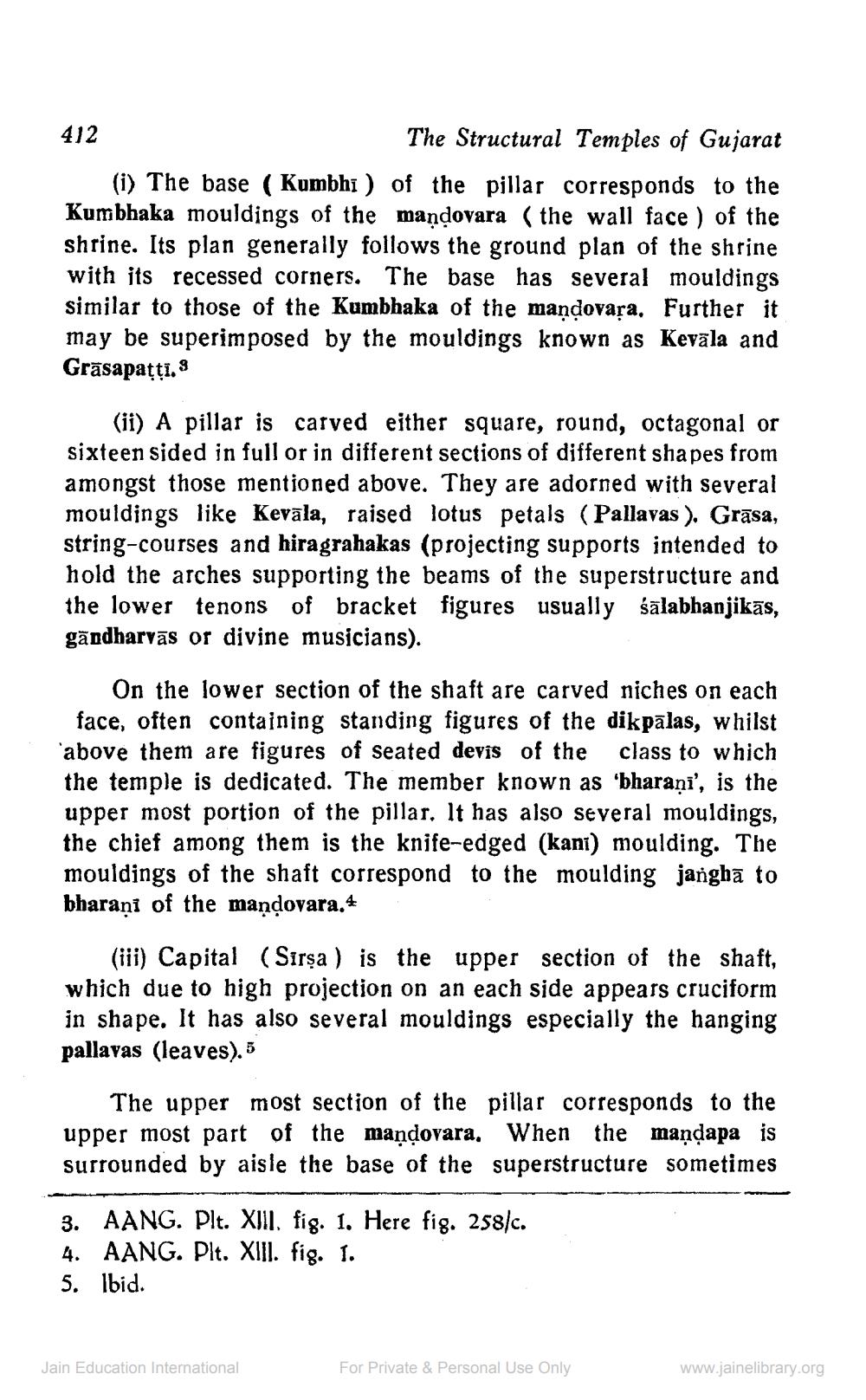________________
412
The Structural Temples of Gujarat (i) The base ( Kumbhĩ ) of the pillar corresponds to the Kumbhaka mouldings of the mandovara (the wall face ) of the shrine. Its plan generally follows the ground plan of the shrine with its recessed corners. The base has several mouldings similar to those of the Kumbhaka of the mandovața. Further it may be superimposed by the mouldings known as Keväla and Grāsapatti.
(ii) A pillar is carved either square, round, octagonal or sixteen sided in full or in different sections of different shapes from amongst those mentioned above. They are adorned with several mouldings like Kevāla, raised lotus petals (Pallavas). Grāsa, string-courses and hiragrahakas (projecting supports intended to hold the arches supporting the beams of the superstructure and the lower tenons of bracket figures usually śālabhanjikās, gandharvās or divine musicians).
On the lower section of the shaft are carved niches on each face, often containing standing figures of the dikpālas, whilst above them are figures of seated devis of the class to which the temple is dedicated. The member known as 'bharani', is the upper most portion of the pillar. It has also several mouldings, the chief among them is the knife-edged (kani) moulding. The mouldings of the shaft correspond to the moulding janghā to bharani of the mandovara. 4
(iii) Capital (Sirşa ) is the upper section of the shaft, which due to high projection on an each side appears cruciform in shape. It has also several mouldings especially the hanging pallavas (leaves). 5
The upper most section of the pillar corresponds to the upper most part of the maņďovara. When the maņdapa is surrounded by aisle the base of the superstructure sometimes
3. AANG. Plt. XIII, fig. 1. Here fig. 258/c. 4. AANG. Plt. XIII. fig. 1. 5. lbid.
Jain Education International
For Private & Personal Use Only
www.jainelibrary.org




